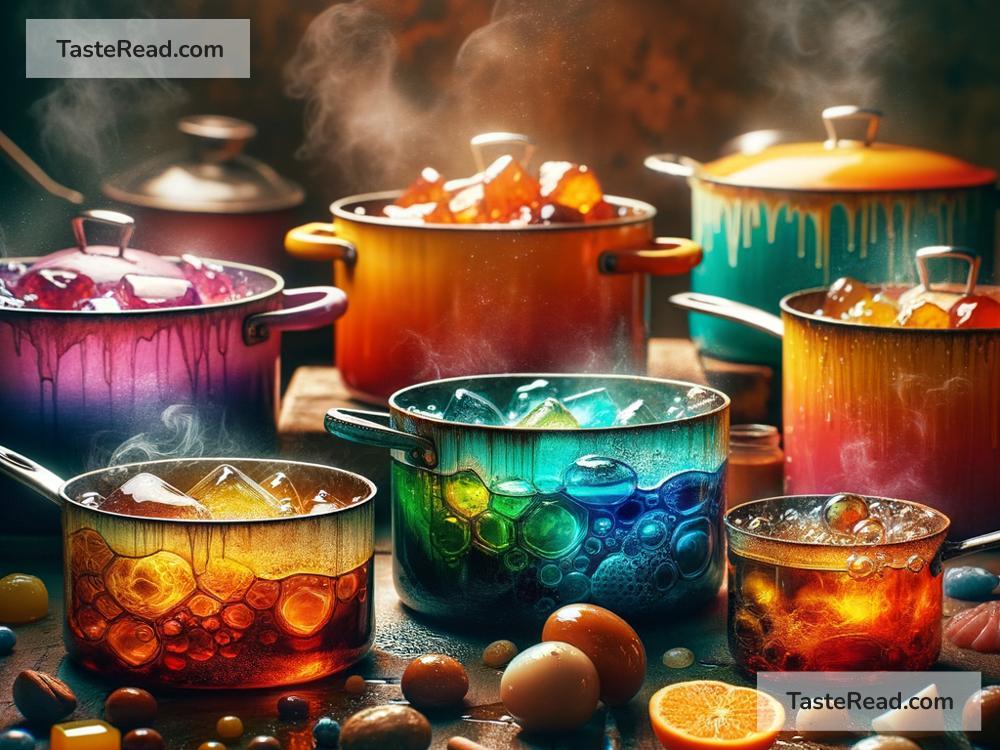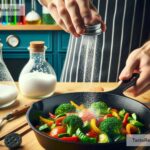The Science of Cooking with Chemical Ingenuity: Techniques and Tips
Cooking is more than just combining ingredients and heating them up. It’s a delightful dance of chemistry, biology, and physics. Understanding the science behind cooking helps you not only create delicious meals but also troubleshoot common kitchen challenges. Don’t worry—it’s not about memorizing complex formulas! It’s about demystifying everyday techniques to improve your skills. In this blog, we’ll explore the science behind cooking with simple explanations, plus some practical tips.
The Chemistry of Cooking: Transformations at Work
When you cook, amazing chemical reactions happen. Think of cooking as a science experiment that turns raw ingredients into mouthwatering meals.
1. Heat and Its Effects
Heat is a key player in cooking. It transforms proteins, sugars, and fats at a molecular level. Here are three main cooking techniques and the science behind them:
-
Boiling:
When you boil food, water turns into steam at 100°C (212°F). Heat breaks down tough fibers in veggies or proteins in meat, making them tender. For instance, boiling potatoes softens their starches, turning them into creamy mashed potatoes. -
Baking or Roasting:
Dry heat in an oven creates the Maillard reaction. This is a chemical process where heat interacts with proteins and sugars, resulting in browning and richer flavors. It’s why roasted chicken skin turns golden or cookies get that tasty crust. -
Sautéing or Frying:
Hot oil transfers heat quickly, allowing ingredients to brown. Fats play a key role here by adding flavor and helping crisp the surface of foods like fried chicken or stir-fried veggies.
2. The Magical Maillard Reaction
Ever wondered why toasted bread or seared steak smells so delicious? That’s the Maillard reaction—a chemical process that transforms amino acids (from proteins) and sugars. It creates hundreds of flavor compounds, giving cooked food that “golden brown” goodness.
Tip: To get a perfect Maillard reaction, don’t overcrowd your pan. Allow space between ingredients, so steam dissolves and heat directly hits your food.
3. Caramelization: Sweet Science
Caramelization is the breakdown of sugar under heat. This is why sautéed onions develop a sweet flavor and golden-brown color. It’s also why desserts like caramel sauce taste rich and complex.
Tip: Low and slow heat works best for caramelizing sugar or onions. Be patient—it’s worth the wait!
The Biology of Cooking: Working with Proteins and Starches
The biology of cooking revolves around understanding proteins, starches, and enzymes.
1. Protein Denaturation
Proteins are chains of amino acids, tightly folded. When exposed to heat, acid, or salt, these chains unfold and change texture. For example:
- In a fried egg, heat denatures the proteins, turning the egg white from transparent to solid white.
- Tenderizing meat by marinating in lime juice or vinegar works because acids denature proteins, making the meat softer.
Tip: Avoid overcooking proteins—they can go from tender to tough if denatured too much.
2. Starch and Gelatinization
Starches (found in flour, rice, potatoes, etc.) absorb water and swell when heated. This is gelatinization! It’s what thickens sauces and soups or turns pasta from hard to soft.
Tip: To make lump-free gravy, mix flour with cold water or fat before adding it to hot liquid. This prevents clumping.
The Physics of Cooking: Timing and Temperature
Good cooking involves precise temperature control and timing. Both are essential in preventing undercooking or overcooking.
1. Temperature Control
Cooking works differently at various temperatures:
– Low heat: Ideal for slow cooking (e.g., stews), as it helps flavors blend and ingredients tenderize.
– Medium heat: Perfect for even cooking (e.g., sautéing).
– High heat: Best for quick sears or frying, creating crispy textures.
Tip: Using a food thermometer ensures you hit the right internal temperature for meats, like 165°F for chicken.
2. Resting Time
Ever noticed juices run when you cut steak immediately after cooking? Resting meat allows the juices to redistribute. Without resting, your meat might end up dry.
Tip: Rest cooked meats for 5–10 minutes after removing them from heat for juicier results.
Tips for Cooking with Chemical Ingenuity
Here are some easy but science-inspired tips to elevate your cooking:
-
Acids Brighten Flavors:
Add a splash of vinegar, lemon juice, or wine at the end of cooking sauces or soups. Acidity enhances flavor balance and makes dishes pop. -
Salt Isn’t Just for Taste:
Salt draws water out of ingredients, intensifying flavor. Sprinkle it on veggies before roasting for better caramelization. -
Experiment with Emulsions:
Emulsions combine two unmixable liquids like oil and water (e.g., mayonnaise or salad dressing). Use a whisk to force them together. Add oil slowly for smooth, creamy emulsions. -
Cool Down Dough:
Chilling cookie dough before baking solidifies fats, preventing cookies from spreading too much and resulting in chewier textures. -
Focus on Ratios:
Cooking, unlike baking, is forgiving—but ratios matter. For example, use 1 part vinegar to 3 parts oil for vinaigrettes.
Conclusion: Cooking with Curiosity
Understanding the science of cooking doesn’t mean you have to be a scientist—it’s all about curiosity. When you know the “why” behind techniques like browning, tenderizing, or thickening, you become a more confident and creative cook. Experiment, take risks, and enjoy your culinary journey. After all, great cooking is where science meets art!


